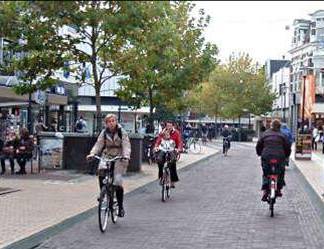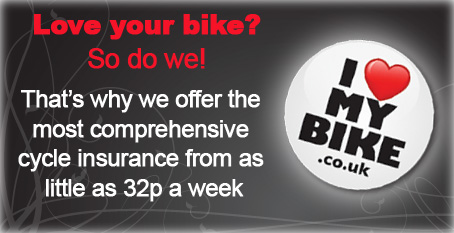 Calderdale in West Yorkshire has been named the most dangerous place to cycle in Britain, with cyclists in the area at 15 times the risk than those in York.
Calderdale in West Yorkshire has been named the most dangerous place to cycle in Britain, with cyclists in the area at 15 times the risk than those in York.
A new study by the cycling organisation, CTC, rates local authority areas in England according to how safe they are,and its results show that where bikes are concerned, there is strength in numbers; the more riders on the road, the lower the accident rate.
Areas awarded judged the safest include York, Hull, Lincolnshire and Cambridgeshire, while the least safe include Bradford, Blackburn and Kirklees.
Latest Cyclist casualty figures
A report this week by the National Audit Office revealed that the number of cyclists killed and seriously injured on Britain’s roads rose by 11% between 2004 and 2007 despite no significant increase in cycling.
One in fifty journeys are by bike
In Britain as a whole, only 2 per cent of all journeys involve a bicycle. By contrast, the Danes ride over 10 times further than the average person in this country but run only 20 per cent of the risk of being killed.
A spokesperson for the Environmental Transport Association (ETA) said: “Bicycles are a remarkably safe and healthy way of getting about, but our advice is that every cyclist should take out insurance.”
Do cyclists need insurance?
Bikes are vulnerable to theft and in the case of an accident you may need to seek compensation or even deal with a claim by someone else. Cycle insurance from the ETA is fully comprehensive.
At no extra cost, it includes new-for-old replacement, cover for accidental damage, third party insurance, personal accident cover and if you breakdown, we will even come out and recover you and your bike.
![]()
ETA comment: Why is there so much cycling in Denmark?
 ETA Director, Andrew Davis, recently visited Denmark and remarked on the number of cyclists: “People tell me that more people cycle in Denmark than here because Denmark is flat – okay Denmark isn’t hilly but nor are most of our urban areas. So that reason doesn’t hold. It’s the weather then – no wrong again – Danes cycle in the snow at -10°C. I think the reason is because Denmark is more socially equal than Britain so you do not have to wear Lycra to ride a bike. Cycling is regarded as just another mode of transport so it needs to be catered for just like any other. Consequently, the streets in Denmark tend to be designed for cyclists. No surprise that people cycle. It’s the layout and traffic rules that make the difference.”
ETA Director, Andrew Davis, recently visited Denmark and remarked on the number of cyclists: “People tell me that more people cycle in Denmark than here because Denmark is flat – okay Denmark isn’t hilly but nor are most of our urban areas. So that reason doesn’t hold. It’s the weather then – no wrong again – Danes cycle in the snow at -10°C. I think the reason is because Denmark is more socially equal than Britain so you do not have to wear Lycra to ride a bike. Cycling is regarded as just another mode of transport so it needs to be catered for just like any other. Consequently, the streets in Denmark tend to be designed for cyclists. No surprise that people cycle. It’s the layout and traffic rules that make the difference.”
“I noticed this starkly when crossing the border from Belgium to France – many cyclists in Belgium but few in France. The weather does not recognise boundaries and the terrain was the same. The only difference was the street layout. In Belgium the cyclist is catered for to a far greater extent than in France.”
“So that is what we need to do here. As cycling is even more efficient and green than walking, street layout should begin with the cycle, then add walking, then add motorised traffic. Such an aspiration is so far removed from current experience we should begin with the inner parts of our towns and cities – the area within 800m of the town centre.”
The benefits of cycling
Cycling is not an extreme sport. It can be enjoyed by both young and old and there is no need for any equipment other than the comfortable outdoor clothing you probably already own.
- Cycling is a great way of getting and staying fit. It’s known as a low-impact activity, which means it doesn’t put a strain on your joints. If it’s been a while since you took exercise remember to take things easy, and if you suffer from a medical condition have a quick word with your doctor.
- It’s a practical way to keep fit. 75% all personal journeys are less than 5 miles long – that’s half an hour on a bike.
- Leaving your car at home and taking the bike is of benefit not only to your health, but your community; you’ll be helping to reduce noise and air pollution as well as traffic congestion
- It’s almost free. Bicycles can be very cheap to buy. They don’t need an MOT, insurance, fuel and can be parked almost anywhere for free.
- Riding a bike can help you maintain a healthy weight. Average cycling burns about 300 calories per hour.

0 Comments View now